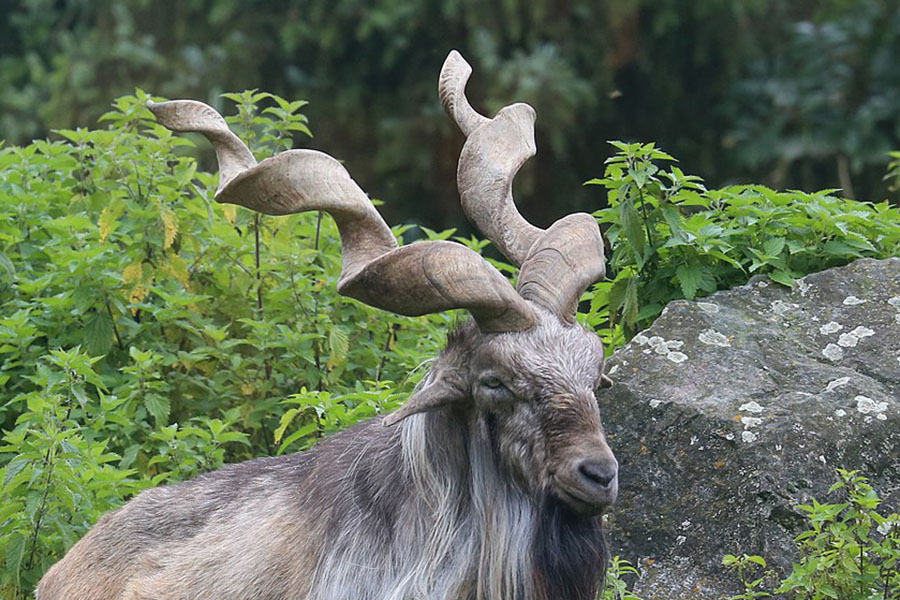Mammal of the Month: Markhor
March 9, 2020
If you’re reading this, there’s a pretty good chance that the picture drew you in. Just take a good long look, it only gets better the longer you stare at it.
The big, tall horns spiraling up to Heaven look like they’d be the perfect bit for a massive drill. The folded-down ears resemble those of a shaggy, friendly dog who can’t wait to see you. The enormous mass of fur decorating its chest is somehow both disheveled and perfectly dignified at the same time.
That face looks perfectly at peace but also shows a hint of a smirk, as if it heard some really funny joke a few days ago that it’s still chuckling about it, but waiting for the exact right time to tell you for maximum effect. No, it won’t share with you until it wants to, but you know it’ll be so worth it when it does.

This is the markhor. Markhors are a species of goat that like to hang out in the mountains at high elevations. They are typically found in places such as Pakistan, Afghanistan, Central Asia, and the Himalayas. The tendency to seek out high elevation is one of their most prominent characteristics, as it helps them in many ways.
Their natural predators, such as wolves and big snow-cats, are generally uncomfortable following the markhor as high as it goes, which can be around 13,000 feet above sea level. They don’t like the snow very much though, and travel back down the mountains when wintertime arrives.
They are vegetarians and typically eat plants as simple as grasses, which they can also find at high elevations.
In terms of physical features, the markhor certainly is a sight to behold. It is the largest species of goat, and is decked out with goat-like hooves and their signature horns, which can be around five feet in length in males, and two feet in females.
They are decently social animals; the females live in packs all the time and the males live in packs during mating season, living alone for the rest of the year.
Not only can they be found in Pakistan, but they are the country’s national animal. Their name seems to have originated from Persian, with mar meaning “snake” and khor meaning “eater.” This is seen as a reference to the markhor’s habit of killing snakes, and possibly a reference to their spiraling, snake-like horns.
Charles Darwin and other scientists theorized that the markhor is an ancestor of the domestic goat.















